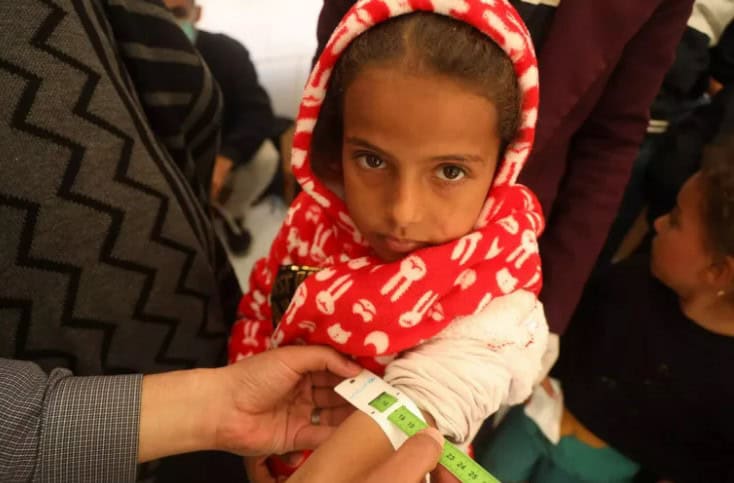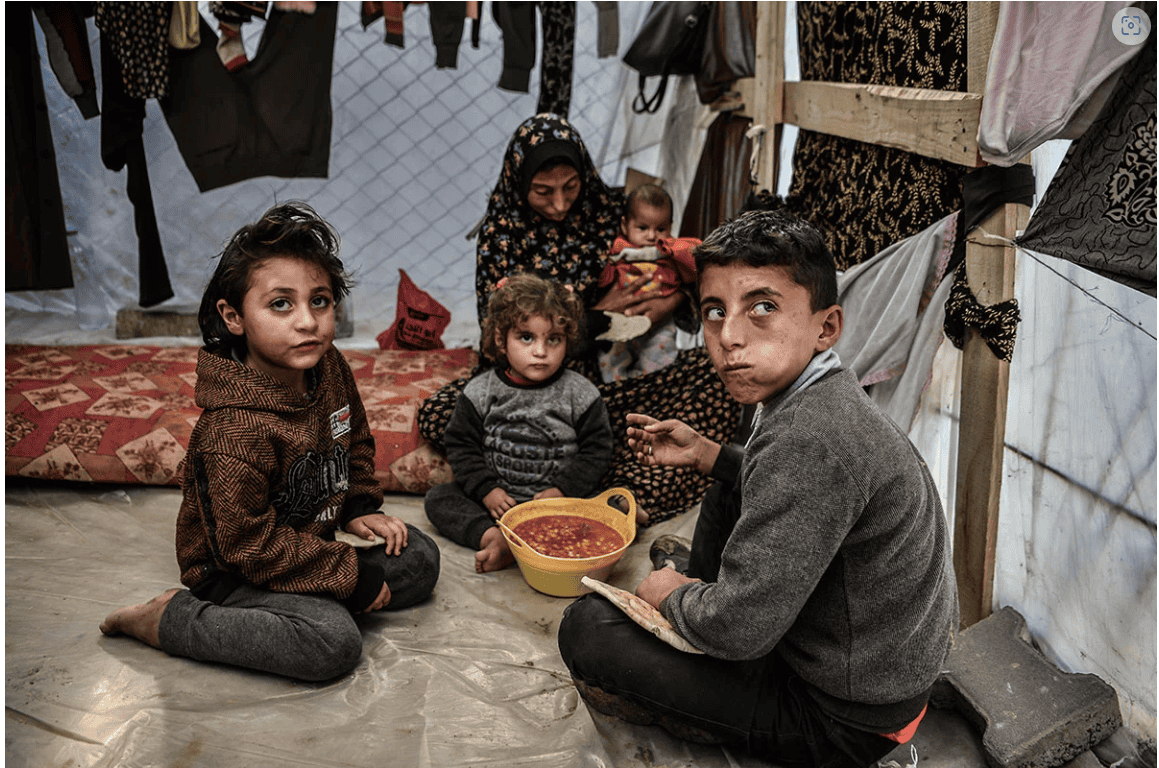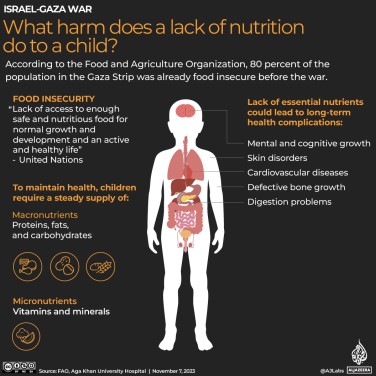
Starvation: The Long Term Effects & Possible Death
January 15, 2025
On November 20th, 1954, the first World Children’s Day was established by the United Nations. Each anniversary is intended to commemorate the recognition of the inalienable rights of children to have food security, access to education, safety and other essential services that serve their protection and development. It is also a day to observe where and how the global community has fallen short in ensuring the rights of children. On the latest anniversary, the children of Gaza were at the center of international conscience. ReliefWeb shared a report from Mezan, which concluded that children were the greatest sufferers of Israel’s starvation policies. Additionally, due to the systemic destruction of critical civilian infrastructure as well as the closure of humanitarian around the strip, food, medicine, baby formula and other vital supplies have become scarce to non-existent.

A family is seen sitting around a bowl of beans in their tent in Rafah, in the south of the Gaza Strip. Photo: UNICEF/Abed Zagout
Nearly six months after the start of the war, the level of desperation for food among Gazans had already spread to social media. Videos showed families baking bread using birdseed, eating weeds and giving newborns dates to suck on in lieu of milk. Several cases of child deaths caused by malnutrition or dehydration were reported at the time. A report by the Global Nutrition Cluster, a United Nations Children’s Fund (UNICEF)–led partnership of humanitarian organizations, found that in December 2023 and January 2024, 9 in 10 children under the age of two and more than 9 in 10 pregnant and breastfeeding women had consumed two or fewer food groups in the previous day, a situation considered “severe food poverty.” In addition, approximately two thirds of households ate once a day. In the northern Gaza Strip, 1 in 6 babies and toddlers were acutely malnourished.
Moreover, the piece discussed the short-term health consequences of food scarcity. In children, severe acute malnutrition can lead to muscle wasting, stunted growth and medical complications, including sepsis, meningitis, diarrhea and severe anemia. Worldwide, nearly half of all deaths of children less than five years of age are linked to malnutrition. Furthermore, even if these children were to return to normal nutrition levels, research shows that past periods of acute malnutrition lead to long-lasting damage later in life, and possibly impact future generations. A study focused on Southern Africa found that even 48 weeks after children recovered from acute malnutrition, they continued to show signs of inflammation in the gut and throughout their body, making them more likely to be readmitted to a hospital and die. Childhood malnourishment is also linked to developing problems, including cardiovascular disease, hypertension and metabolic disorders as an adult.
“At this stage, children are too weak to cry,” said the observer for the State of Palestine during an October 2024 meeting of the Third Committee of the UN General Assembly. She cited the countless mothers and fathers who rush around different areas under non-stop Israeli bombs and airstrikes, searching for milk, food and water. Many of them never return, or their children die before they can successfully obtain a small amount of food. Severe malnutrition is a painful death; children’s bodies weaken, their vision blurs, their immune systems and organs fail and their hearts stop. Gaza has become the deadliest place in the world to be a child.

Credit: Al Jazeera
It is important to note, however, that food insecurity was a major problem prior in Gaza to the start of the current war. Though proponents of Israel’s policies claim that the blockade on Gaza was necessary to ensure Israel’s security and that it does not purposely block essential food and medicine, a plethora of data from well-respected institutions argue otherwise. A new study published in The Lancet Global Health journal revealed that in the months leading up to the war in Gaza, most families were struggling to feed their young children. More than half of first graders were not eating either a morning or evening meal each day, including two-thirds of children in the most food-insecure families. Moreover, three out of four parents were worried about their families not having enough food, running out of food, eating low-quality meals, or needing to skip meals. Some 84 per cent of families relied on food aid, providing a critical lifeline, yet 4.5 per cent of children were still extremely thin. Dr. Akihiro Seita, Director of UNRWA’s Health Department and senior author of the study, concluded therefore that the first few months of the food shortage (after the start of the war) would have immediate repercussions on children who were not nutritionally prepared to endure it.
The study also found that most children’s diets lacked nutritious foods such as meat, milk, eggs, vegetables, and fruit. This was especially true for 40% of children in the most food-insecure households, a likely result of not being able to access these essential foods. Furthermore, nearly one in three children had anemia, likely because of a lack of foods rich in iron and other nutrients.
This was the last comprehensive profile of children’s health and nutrition status before the conflict.